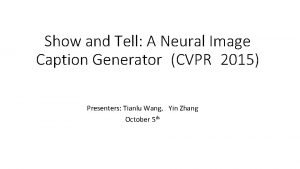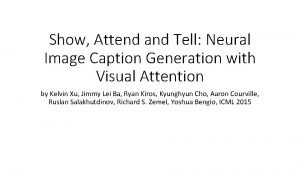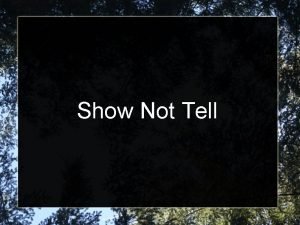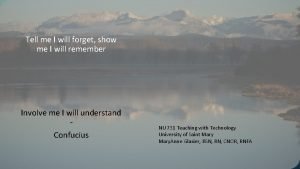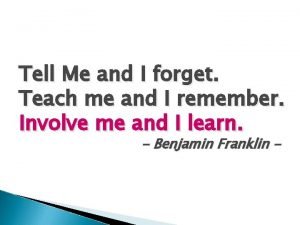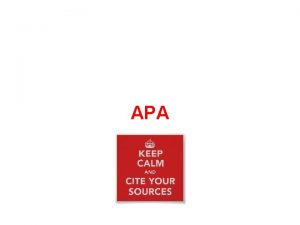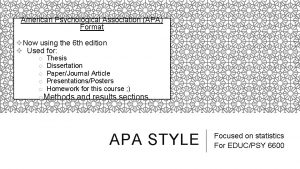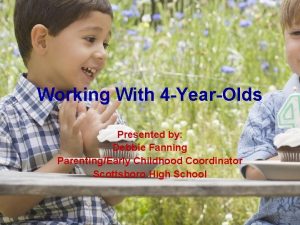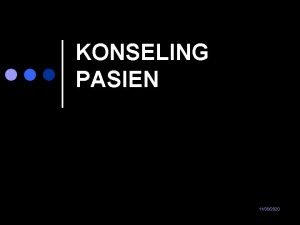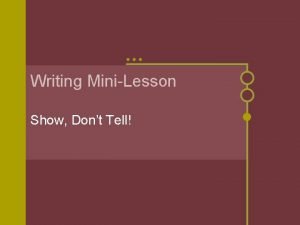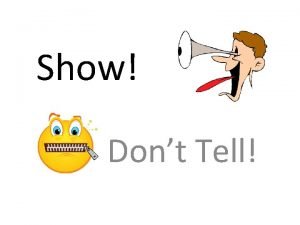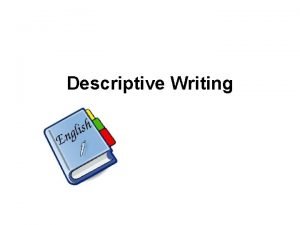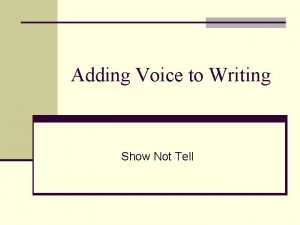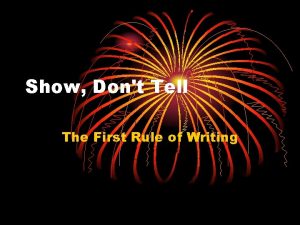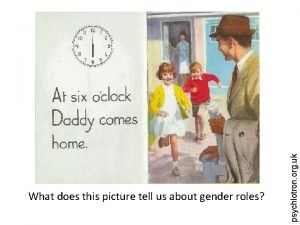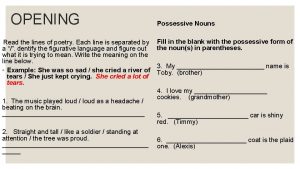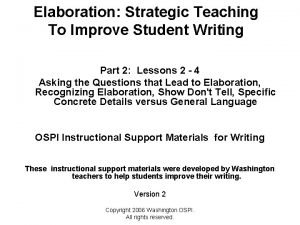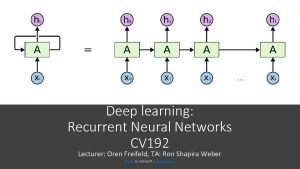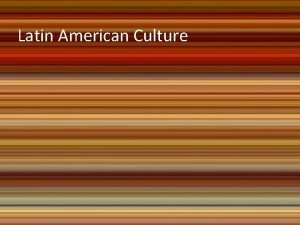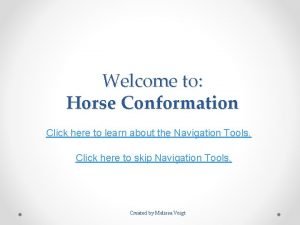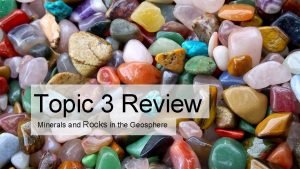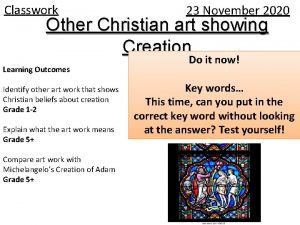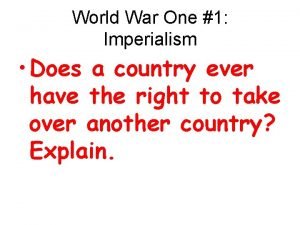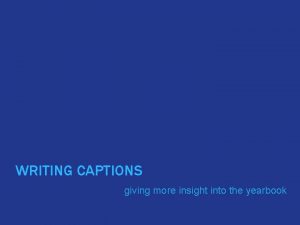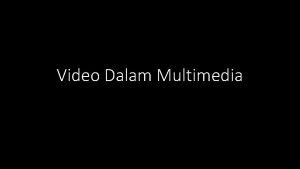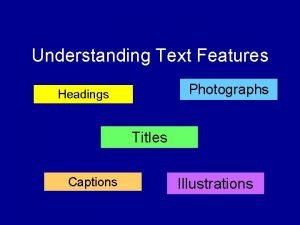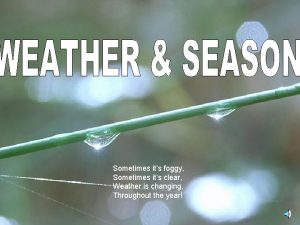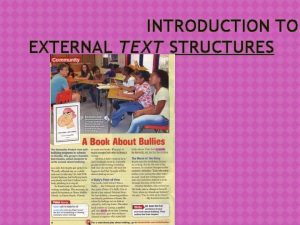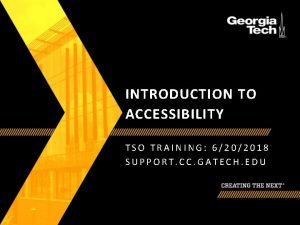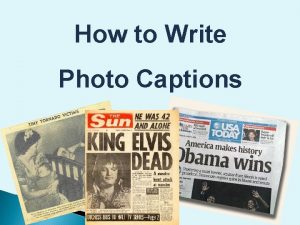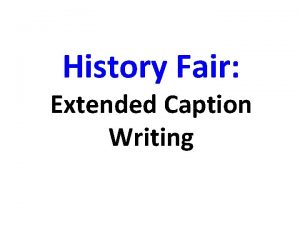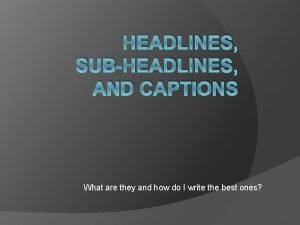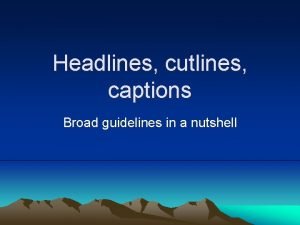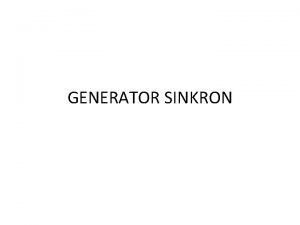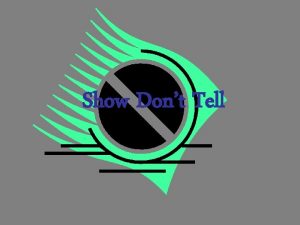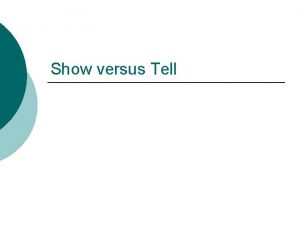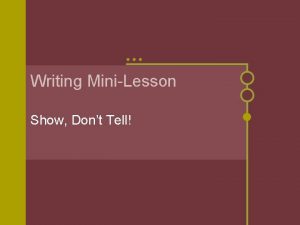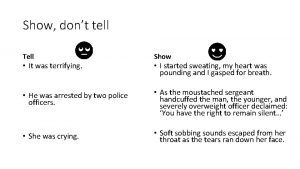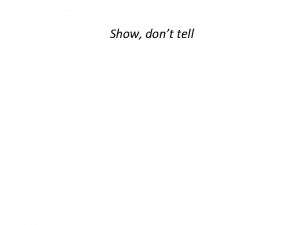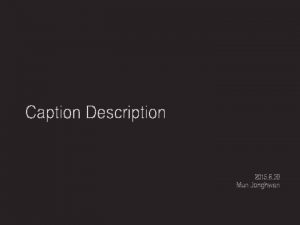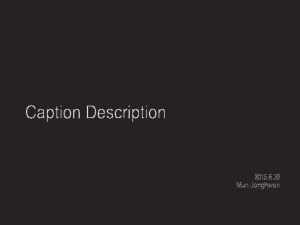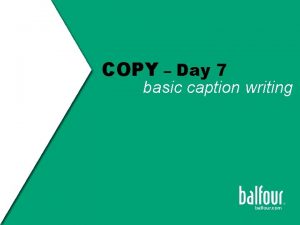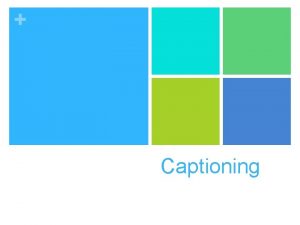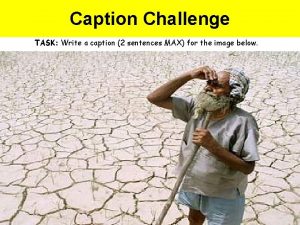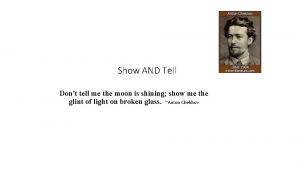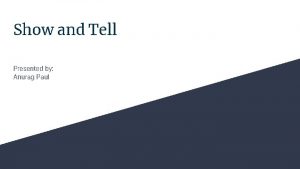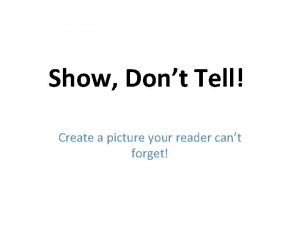Show and Tell A Neural Image Caption Generator






































- Slides: 38

Show and Tell: A Neural Image Caption Generator Oriol Vinyals, Google Alexander Toshev, Google Samy Bengio, Google Dumitru Erhan, Google

Example Image Credit: Oriol Vinyals

System flowchart Image Credit: Reference paper

Introduction • Generative model • CNN (vision) + LSTM (language) • End-to-end system trained to maximize likelihood of target description given image • State-of-the-art results • PASCAL dataset: BLEU-1: 25 → 59 • Flickr 30 k dataset: BLEU-1: 55 → 66 • MS COCO: BLEU-4 score of 27. 7

Introduction • Motivation from Machine Translation: encoder RNN and decoder RNN • Replace encoder RNN with deep CNN • Produces a rich representation of input image • Fully trainable network

Model Image Credit: Reference paper

Model • Objective: maximize probability of correct description given the image • Chain rule for joint probability over words of sentence S • Optimize sum of log probabilities over whole training set • Loss function: negative log likelihood of the correct word Image Credit: Reference paper

Sentence generation • Two approaches • Sampling: sample one word from probability distribution pi and feed the corresponding embedding as input at the next time step until an EOS token is sampled or till a maximum length • Beam search: keep k best sentences at each time • The paper used a beam size of 20 • Beam size of 1 degrades results by 2 BLEU points

Training details • Datasets are smaller • Solution • Transfer learning • Dropout • Ensembling • Can initialize weights of CNN • trained for classification task on Image. Net

Slide Credit: Oriol Vinyals

Evaluation • BLEU score for generation • Recall and mean rank for ranking • Mechanical Turk experiment: human subjects give a score on the usefulness of descriptions • Also use perplexity for hyperparameter tuning but not reported

Results – Sentence generation Image Credit: Reference paper

Results – Reranking Image Credit: Reference paper

Results – Human Evaluation Image Credit: Reference paper

Image Credit: Reference paper

Other results • Transfer learning • Flickr 30 k to Flickr 8 k improves BLEU score by 4 points • Generation diversity • Best candidate sentence is present in training set 80% of the times. Image Credit: Reference paper

Good example Image Credit: Oriol Vinyals

Bad example Image Credit: Oriol Vinyals

Mind’s Eye: A Recurrent Visual Representation for Image Caption Generation Xinlei Chen, CMU C. Lawrence Zitnick, MSR, Redmond

Introduction • Motivation: A good image description is often said to “paint a picture in your mind’s eye. ” • Objective: To learn bi-directional representation that can generate • novel descriptions from images, and • visual representations from descriptions.

Image Credit: Larry Zitnick

Image Credit: Larry Zitnick

Image Credit: Larry Zitnick

Image Credit: Larry Zitnick

Image Credit: Larry Zitnick

Model Image Credit: Larry Zitnick

Objective •

Model • Main contribution is the addition of recurrent visual hidden layer u • Recurrent layer u tries to reconstruct visual features v • Visual hidden layer u is also used to predict the next word Image Credit: Reference paper

Hidden visual units u Image Credit: Larry Zitnick

Recurrent Neural Networks Image Credit: Larry Zitnick

This model • Image Credit: Reference paper

Model • Image Credit: Reference paper

Results – Sentence generation Image Credit: Reference paper

Results – Sentence generation Image Credit: Reference paper

Results – Retrieval tasks Image Credit: Reference paper

Results – Retrieval tasks Image Credit: Reference paper

Qualitative results Image Credit: Reference paper

Questions ?
 A neural image caption generator
A neural image caption generator Show attend and tell
Show attend and tell Show not tell technique
Show not tell technique Tell me i will forget show me i will remember
Tell me i will forget show me i will remember Show me and i will forget
Show me and i will forget Apa image caption
Apa image caption American psychological association example
American psychological association example Famous manifestors
Famous manifestors Tell me what you eat and i shall tell you what you are
Tell me what you eat and i shall tell you what you are Show and tell letter l
Show and tell letter l Barrier konseling
Barrier konseling Show don't tell
Show don't tell Show dont tell excited
Show dont tell excited Show not tell clipart
Show not tell clipart Show not tell in writing
Show not tell in writing Show don't tell
Show don't tell What does the picture tell or show
What does the picture tell or show Show don't tell writing exercises
Show don't tell writing exercises Show dont tell writing
Show dont tell writing Leon gatys
Leon gatys Cs 7643 github
Cs 7643 github What does the image tell
What does the image tell Horse conformation judging practice
Horse conformation judging practice What does this image show
What does this image show Hildreth meiere
Hildreth meiere What does this picture show
What does this picture show Analog image and digital image
Analog image and digital image Yearbook captions examples
Yearbook captions examples Video berasal dari daerah
Video berasal dari daerah Headings text features
Headings text features Clever
Clever Karangan bunga puisi
Karangan bunga puisi Case caption example
Case caption example What is an external text structure
What is an external text structure Photo caption examples
Photo caption examples Cutline vs caption
Cutline vs caption Extended caption
Extended caption Headline vs caption
Headline vs caption Cutline vs caption
Cutline vs caption
